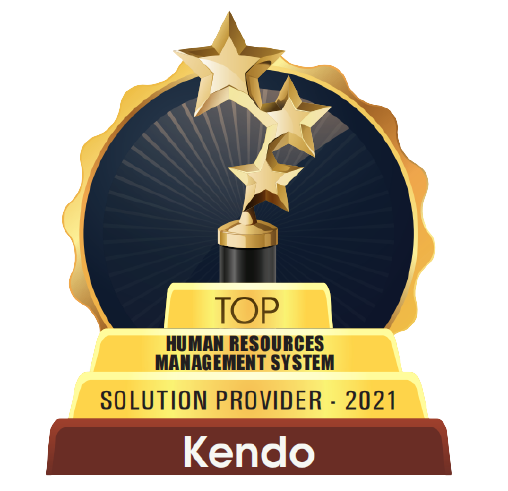
The HR domain was already undergoing a paradigm shift due to the unstoppable trends of automation and digital disruption which were already dramatically transforming the workplace when the COVID crisis emerged, creating the perfect storm for change. Organizations across the world, in order to survive, had to re-imagine the way they worked, how they supported employees, the HR tech they would need, and new management practices. A fast evolution was replaced by a digital revolution.
Business has adapted quickly in establishing a new normal in a hybrid work environment, using collaborative work tools and a renewed focus on welfare. But there were new challenges around performance management and employee experience that the old systems couldn’t deal with. Driven by challenges, moving out of the traditional cocoon of HR management is no longer an option but a necessity! What HR leaders increasingly recognize is the need for a more holistic approach to engaging and managing people.
One that firstly embraces an inclusive broad based agile performance management system that recognizes the interdependence between individual, team, and organization performance. And secondly, provides a dramatically enhanced approach to employee experience that identifies individual needs and delivers a personalized self-managed platform. Kendo’s next generation HR tech platform marries the organization’s imperatives with individual aspirations and in doing so sets the benchmark in the exploding SaaS HR tech space. Notably, Kendo was already designed and developed for the new world of work, and the global pandemic has just accelerated the need to move to this agile and personalized platform.
Meeting the New Work Demands by Going ‘The Kendo Way’ Kendo was masterminded by Jim McKerlie, a pioneer and recognized leader in the HR digital space with more than two decades of experience in providing HR tech products, consulting, and support to businesses worldwide. His extensive domain experience allowed him to see where conventional HR systems and tech were constantly failing to deliver the promised results. As he observes “Technology moves at warp speed and people are most comfortable moving at walk speed. Businesses, mostly larger ones, who Jim McKerlie invested in technology often failed to manage the change needed to get the expected ROI. Many others stayed away from technology upgrades and are still using legacy systems that focus on “record keeping” and not “(intelligent) doing platforms” that facilitate decision-making. McKerlie recognized that organizations needed to be more agile with a focus on execution to enhance their performance and needed to provide a personalized user experience to individuals that provided familiarity to their personal computing and social media experience so they would be comfortable adopting a new tech platform.
This led him to the conception of The Kendo Way as a holistic methodology for improving performance and then the development of the SaaS-based Kendo platform. Coincidentally, the COVID-crisis and subsequent accelerated digital transformation have underscored the pioneering instinct of McKerlie and made Kendo an exemplary platform in HR tech today.
But what exactly is the ‘The Kendo Way’?
Kendo is a Japanese art of self-improvement that contributes not just to the improvement of oneself but also cultivates a culture and prosperity of all others. It’s this philosophy that the platform draws inspiration from. Kendo essentially improves the performance of employees and the organizations they work for by addressing two fundamental pillars of HR: performance management and employee experience.

The first pillar’s focus is on improving the performance of the organization and its people. Kendo starts with the company’s strategic framework and documents purpose and the key strategic pillars. Almost all organizations have these, although many do not have them enunciated, documented, or communicated clearly. This makes it difficult for people to develop and execute detailed plans. With this strategic clarity, business plan objectives can be developed and agreed. These top level objectives provide the foundations of accountability and once they are clearly established, Kendo does its trick! “Kendo breaks the big picture business plan objectives into bite-sized pieces and proposes them to people to accept responsibility for delivering them. This way, everyone gets their agreed piece of the big plan,” says McKerlie. Then the focus on execution comes into play with each agreed objective detailing what needs to be done for it to be delivered i.e., the activities with milestones, which are measured regularly. Objective setting follows The Kendo Way’s interpretation of the SMART methodology which they have made easy to use, intuitive and flexible. But setting objectives is not just a top-down process. Individuals can develop objectives that contribute to other objectives and link these up giving a very democratic bottom-up capability. Objectives need to be agreed between an individual and their manager so that a genuine culture of ownership and accountability is created.
Regular pulse checks are done where actuals and the objective health is assessed. Objective owners provide comments on their progress and their manager adds their comments as well. This information is used elsewhere in individual performance reviews.
When objectives have been set, every individual, team, and leader gets access to a rich, intuitive, and customized dashboard, allowing constant monitoring of progress, identification of issues, and remedial action when required. A powerful report generator allows a deep dive into the information available and provides transparency across the organization.
The second pillar in Kendo provides a personalized employee experience which draws heavily on advanced psychological science and the extensive HR domain knowledge accumulated by its creators. “At the core of Kendo is a combined pool of HR and psychology science, plus extensive executive management experience combined with 20 years software development expertise to build an intelligent people-centric platform” notes McKerlie. Kendo assesses each employee’s technical and behavioral skills, plus their strengths and motivators. Kendo captures a whopping 120 metrics about an employee on that front! Taking these metrics into account, Kendo’s performance appraisal process (which they call, ‘retrospectives’) looks at the relationship between performance and capability (using regression, inferred causal relationship analysis, and other data science techniques) to help managers and individuals develop and execute personalized growth goals for individuals. Aggregating this data provides insight into organizational capability, succession planning, training priorities, and predictive analytics.

The Two Key Enablers to Enhance Performance
Kendo’s next step involves connecting these two pillars i.e., organization imperatives (such as profit, share price, etc.) which underline objectives and employee aspirations (such as growth, promotion, recognition, reward, autonomy, etc.) which underlines each individual’s growth goal, to make it a win-win situation for both the organization and employees. And to facilitate this process, Kendo has developed two key enablers: Structured Teams and an Employee Data Platform.
Staying true to its philosophy, Kendo is indeed bringing in a cultural shift for organizations with a fresh concept of ‘a team.’ Each team is like an entity within the organization, with its own objectives and modus operandi on how decisions are taken, communication protocols, the role and responsibility of each individual, reward and recognition, and so on. Kendo also provides the team with the aggregated team capabilities, allowing team leaders to both understand how best to manage the team and potentially how to restructure it. Kendo, then, through dashboards, delivers regular updates on the team’s progress towards its objectives. An individual shares in the team’s performance but can also be assessed on their contribution to the team. Kendo also allows the dynamic creation of teams so they can exist within a management line or can be a cross-functional, created for a specific purpose. Team success becomes more important than individual glory.
A key part of genuine agility is finding the skills required for a particular item of work from across the organization. This not only provides greater productivity by ensuring the most suitable people are working on the right projects but opens up learning opportunities for people within the organization. This matching of work (an objective) to skills (individual capabilities) is game-changing for HR managers and business leaders.
All such insightful management decisions are made possible because of Kendo’s second enabler, their expansive and integrated Employee Data Platform and the use of advanced data science analytic techniques. Kendo creates a data lake from all the possible sources within an organization and also outside it, to generate critical and meaningful decisions. Managers can comprehend what attributes are the contributors to performance and focus on those key areas. “The data has always been there. but it was not being retained or it was in silos like spreadsheets” remarks McKerlie. With Kendo, it all comes to light. Kendo can not only tell managers when they need to do undertake a task (and give them a nudge if they are overdue) but will shortly be able to recommend the right decisions to be made.
It’s this intelligence that sets Kendo apart in its domain. “Most HR tech platforms only record information. Kendo, on the other hand, is ‘Smart SaaS’,” McKerlie states. Whether it’s a performance review, a project discussion, or any other managerial decision, Kendo is all about facilitating the user to “doing”. Even though Kendo boasts such extensive capabilities, the platform’s installation and usage is a seamless experience. A global fast-moving consumer goods (FMCG) company implemented the platform two years ago in their Australasian division and Kendo supported them in achieving a significant lift in the culture of accountability and a swift turnaround in corporate performance.
Kendo has been swiftly carving a place out for itself as valuable HR tech for the hybrid workplaces of today. As the platform has undertaken integration with several major enterprise solutions, the ‘The Kendo Way’ is all set to unfold worldwide. However, with an expertise of more than two decades operating in the APAC region and a long term base in Indonesia, McKerlie believes the APAC region will be a core focus for Kendo going forward. “With the booming economies in APAC, organizations will increasingly require an agile HR tech that is scalable,” notes McKerlie. “Our ‘Smart SaaS approach will be invaluable for them as they face their own war for talent and need to provide competitive and compelling employee experiences,” he concludes.
